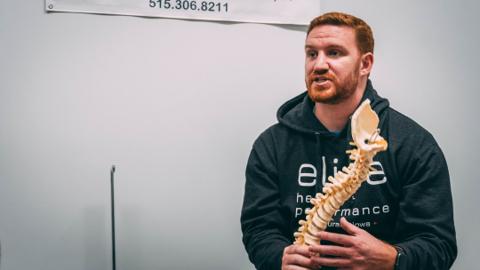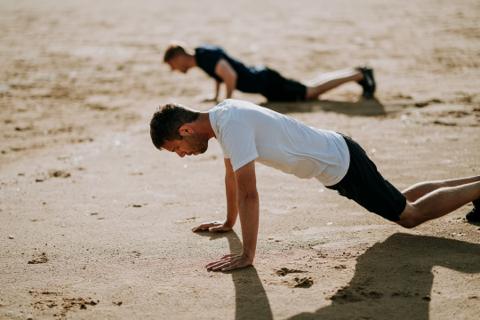Your Journey Starts Here,
Stress Fracture and Calf Strain Treatment
At BeyondCare Physical Therapy, we specialize in treating common lower leg injuries like stress fractures and calf strains. Whether you're a runner, athlete, or active individual, our personalized treatment plans help you recover quickly and return to your activities safely.
Stress Fracture Treatment
Stress fractures are tiny cracks in the bone that result from repetitive stress or overuse, frequently observed in runners and athletes. These injuries typically occur in the foot, ankle, or lower leg, necessitating appropriate care for effective healing.
To ensure a full recovery, it is crucial for individuals with stress fractures to rest and modify their activity levels. Seeking medical advice and following a structured rehabilitation program can help prevent future injuries and promote overall bone health.
Common Causes and Risk Factors
Common causes and risk factors for stress fractures include overuse, improper footwear, sudden activity increases, and nutritional deficiencies.
Repetitive high-impact activities like long-distance running
Repetitive high-impact activities, such as long-distance running, can lead to stress fractures due to the excessive strain placed on bones.
Intense training without adequate rest
Stress fractures often arise from intense training without sufficient rest, leading to overuse injuries.
Poor footwear or improper training techniques
Common causes and risk factors for stress fractures include poor footwear choices and improper training techniques.
Higher prevalence in female athletes
Stress fractures are more commonly seen in female athletes due to factors such as hormonal differences, training intensity, and lower bone density.
Common Stress Fracture Sites
Signs and symptoms of a stress fracture include localized pain that worsens with activity, swelling, tenderness, and sometimes bruising around the affected area.
Lower leg (tibia, fibula)
Calcaneus (heel bone) and talus
Metatarsals (foot bones)
Big toe
Signs and Symptoms
Signs and symptoms of a stress fracture include localized pain, swelling, and tenderness, with treatment focusing on rest, ice, compression, and gradual return to activity.
Localized pain and tenderness that improves with rest
Pain and tenderness are concentrated in one area, easing significantly with rest.
Swelling or discomfort during activity
Increased swelling or discomfort is noticeable during physical activity.
Pain that worsens with weight-bearing activities
Pain intensifies when engaging in weight-bearing activities, signaling a potential stress fracture.
Diagnosis
Stress fracture diagnosis involves identifying localized pain and tenderness, often confirmed through imaging techniques like X-rays or MRI.
Physical examination to assess pain and tenderness
X-rays, which may not always detect early fractures
Bone scans or MRI for accurate diagnosis
Treatment and Prevention
Effective treatment for stress fractures includes rest, ice, and gradual return to activity, while prevention focuses on proper footwear, balanced training, and adequate nutrition.

Rest and Immobilization: Using braces or crutches to allow healing

Cross-Training: Low-impact activities to maintain fitness

Proper Footwear: Guidance on shoes to reduce bone stress

Gradual Return to Activity: Structured plans to prevent re-injury
Calf Strain Treatment
A calf strain, also known as a gastrocnemius muscle strain, typically happens when the calf muscle is overstretched or torn, particularly during rapid activities such as sprinting. This injury can lead to significant discomfort and mobility issues if not addressed promptly.
Immediate treatment is crucial to avoid further complications and to facilitate a complete recovery. Rest, ice, compression, and elevation (RICE) are commonly recommended strategies to manage the injury and promote healing.
Common Causes
Common causes of calf strain include overexertion, improper warm-up, and muscle imbalances, with treatment typically involving rest, ice, compression, elevation, and gradual rehabilitation exercises.
Sudden sprints or explosive movements
Rapid acceleration or high-intensity bursts can lead to unexpected calf strains.
Inadequate warm-up or poor conditioning
Failing to properly warm up or lacking physical conditioning increases the risk of calf injuries.
Overuse or fatigue during physical activity
Prolonged activity without adequate rest can result in muscle fatigue, making the calf more susceptible to strains.
Signs and Symptoms
Signs and symptoms of a calf strain include sudden pain, swelling, and bruising in the calf, with treatment focusing on rest, ice, compression, elevation, and gradual rehabilitation exercises.
Localized tenderness or a "bulge" in the calf muscle
A noticeable bulge and tenderness in the calf indicate a strain, prompting immediate rest and ice application.
Pain when walking, descending stairs, or raising the heel
Experiencing pain during activities like walking or stair descent suggests the need for modified movement and gradual rehabilitation.
Swelling or bruising in severe cases
Significant swelling or bruising requires prompt attention with ice, compression, and elevation to manage inflammation effectively.
Treatment and Recovery
Effective treatment and recovery for a calf strain involve rest, ice, compression, elevation (RICE), and a gradual return to activity through targeted rehabilitation exercises.
Rest & Ice to reduce pain
Compression and Elevation
Stretching and Strengthening
Gradual Return to Activity
Preventation
To prevent calf strains, ensure a proper warm-up and stretching routine before physical activity. Additionally, strengthen calf muscles through targeted exercises and maintain proper hydration to support muscle function.